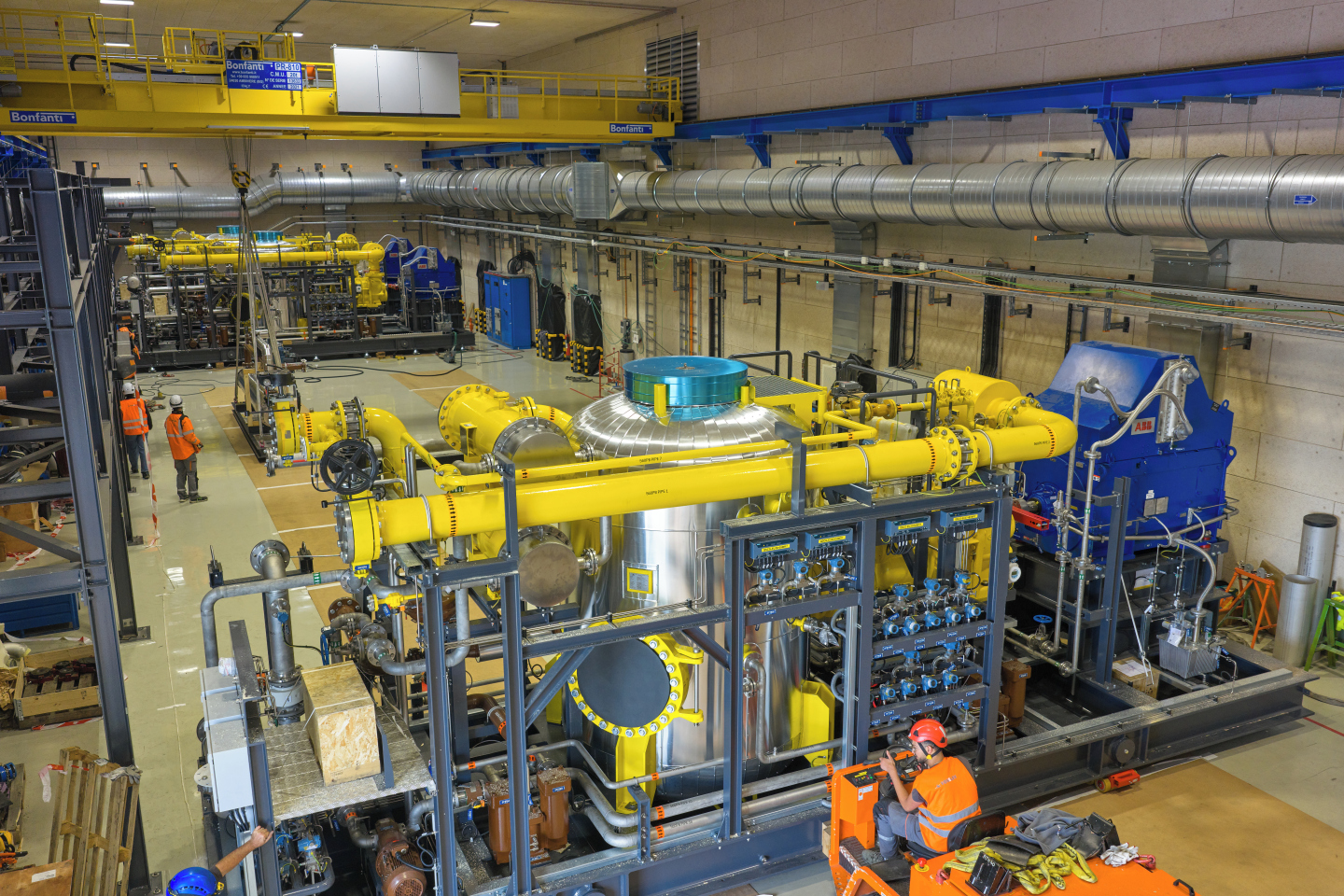
Installation of two compressors for the HL-LHC at point 1 of the LHC at the beginning of October. (Image: CERN)
As manufacturing of the components for the High-Luminosity LHC (HL-LHC) reaches its final stages, installation activities are gaining pace. Six impressive compression units have just been delivered by Linde Kryotechnik and installed in the new HL-LHC buildings adjoining the surface sites of the ATLAS and CMS experiments, at points 1 and 5 of the LHC. These compressors, mounted on casings known as "compressor skids", were assembled by Enerproject in Mezzovico in the Swiss canton of Ticino, before being delivered to CERN. These are key components of the cryogenics system that will cool the new HL-LHC installations.
To achieve a high level of luminosity, new, more powerful focusing magnets will be installed on either side of the ATLAS and CMS experiments. Therefore, increased cryogenic power is needed. This means that two new cryogenic refrigerators must be installed in addition to the eight current refrigerators that serve the LHC today. These systems produce superfluid helium at 1.9 K (-271°C) from helium gas at room temperature. They are made up of refrigerators located on the surface, with cold compressors located at the level of the LHC tunnel and cryogenic lines which transport the helium from the surface to the underground galleries, then around the entire accelerator.
Like the fridge in your kitchen, the LHC refrigeration systems include a compressor and a cold box which houses the heat exchangers and the expansion turbines - but these refrigerators are much larger, taking up several buildings. They are equipped with compressors which compress the helium to 20 bar, and a cold box which lowers the temperature and the pressure of the helium to 4.5 K (-269°C) and 3 bar. The cold boxes, which will complete the surface installations at points 1 and 5, should be delivered at the end of the year.

In parallel, the large tubes for the cryogenic distribution line (QXL) are being lowered into the new underground galleries of the future accelerator. The objective is to install the sections in the service galleries as of today, and then to complete the installation in the LHC tunnel during the third long shutdown (LS3).
Major cryogenics operations began last year with the delivery of four large helium tanks to supply the new refrigerators that are currently being installed.






